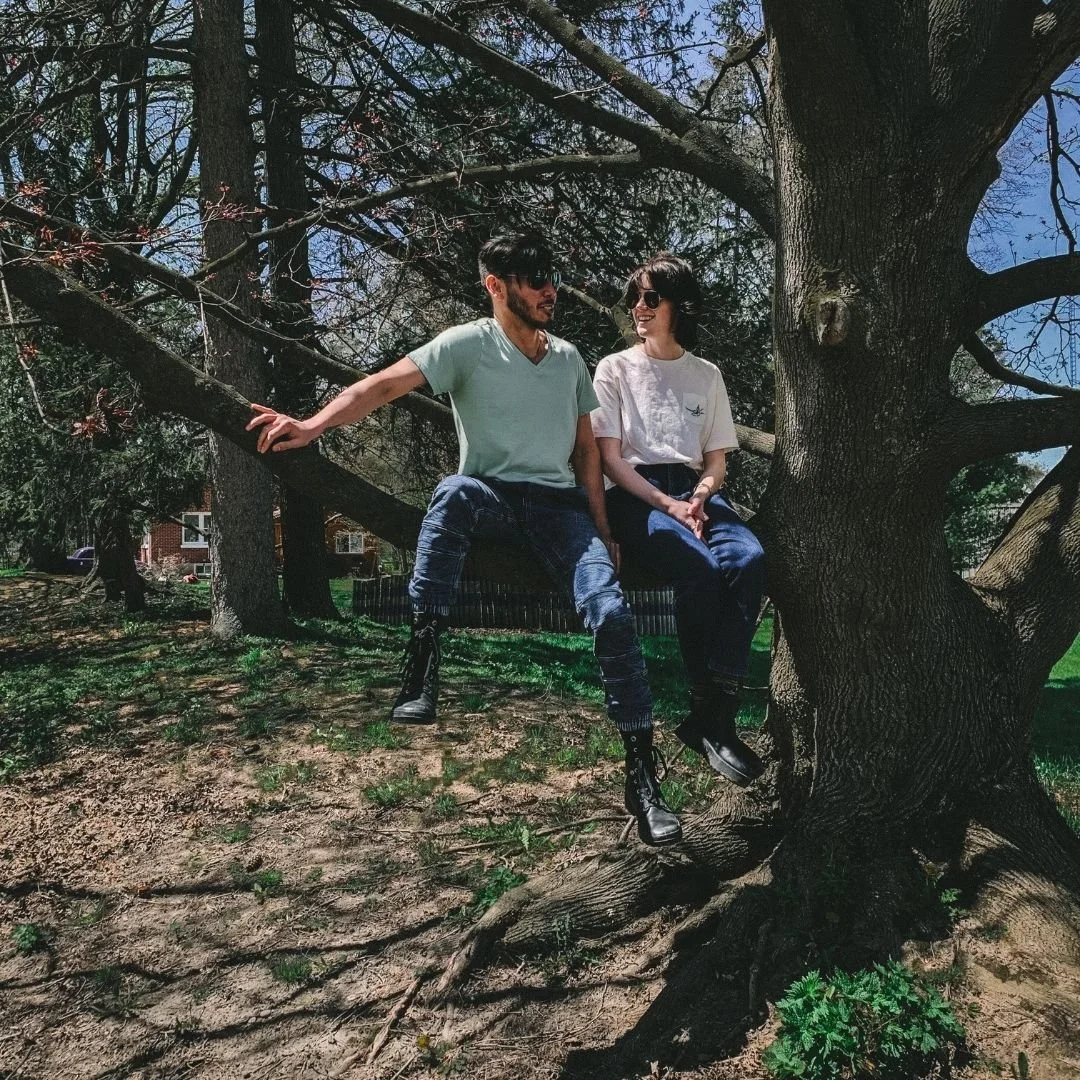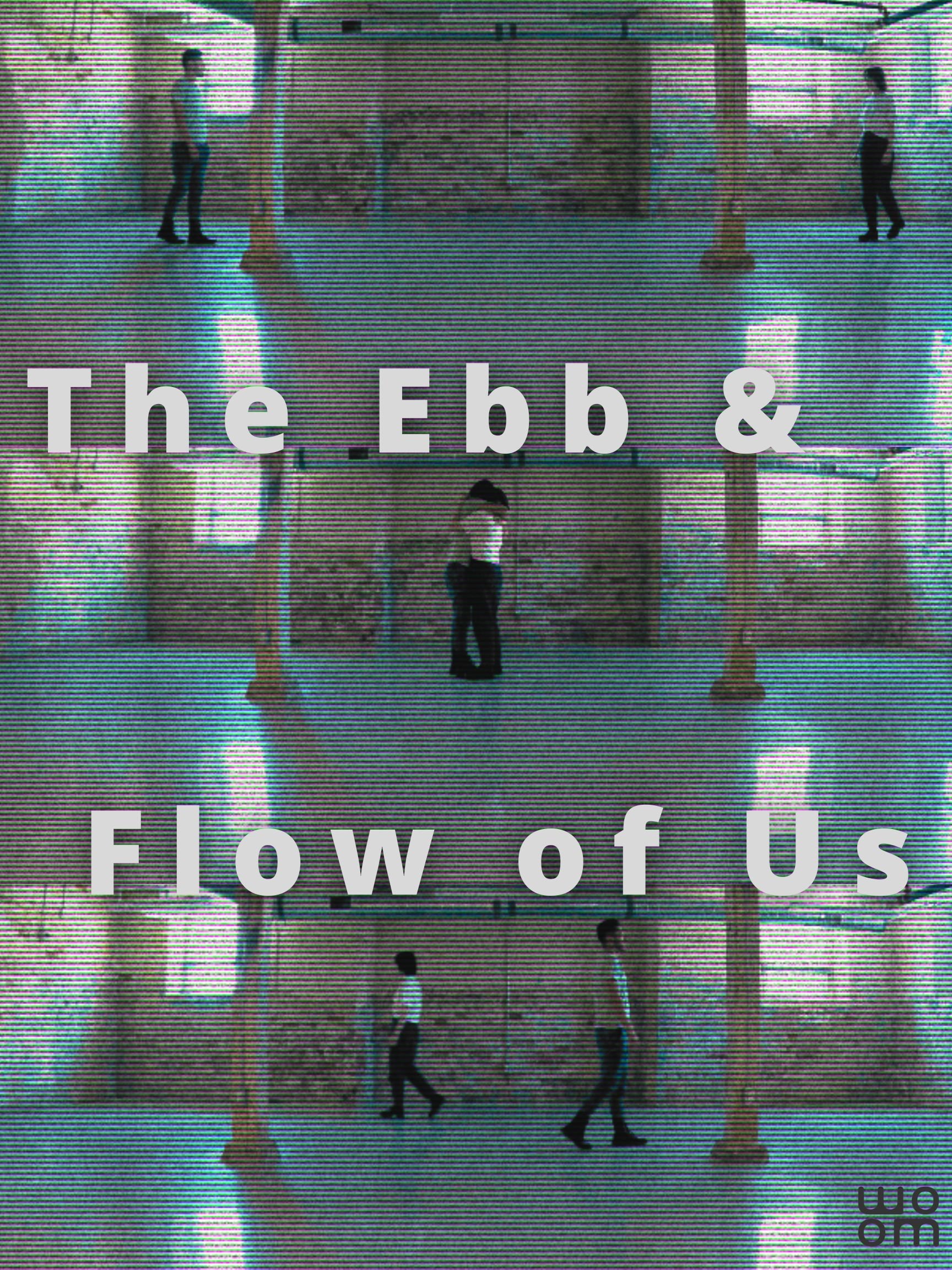
The Ebb & Flow of Us
By Andrew White-Martin and Brooke Barnes in Consultation with Andy Houston
Watch our documentary reflection of our contribution to
The Mush
Hole Project
About the artists
Andrew White-Martin is an actor of the Mohawk nation, born and raised on the Six Nations of the Grand River Territory. He wrapped shooting on the feature film "Quebexit" in 2019 and was nominated for Best Supporting Actor by the American Indian Film Institute in 2019 for his work in the feature film "The Incredible 25th Year of Mitzi Bearclaw. Andrew’s work spans film and television, from live performance to documentary work.
Brooke Barnes is an artist-researcher of site-specific and intermedia creations with a B.A. in Theatre and Performance at the University of Waterloo and a certificate in Social Media through Seneca College. Brooke maintains a strong background in fostering relationships with co-collaborators and artistic employers and has recent experience in championing creative digital development for community and company initiatives.
Visit Brooke’s website
The Ebb and Flow of Us is a documentary-style reflection of the development of our platonic relationship to each other as queer artists working on sites of Indigenous history and trauma; Old Fort Erie as tour guides, where we first met, and the former Mohawk Institute as artists for the installation of Sub-Merge as part of the site-specific performance of The Mush Hole Project.

A note on development
In this short film, we record the re-visitation of these sites and dive into the emotional ebbs and flows that these sites solicited. This duo-reflection focuses on our relationship to reconciliation, and our associations to these sites as we traverse them. Both sites are places of layered historic and personal trauma. We acknowledge that these re-visitations are transpiring during a global pandemic while the unearthing of unmarked graves ensues. We do not go back to these sites unless we are called to, and through this Call to Contribution during a time where social distancing is still in place, we are coming together to share our story from before, during, and after our work in The Mush Hole Project in 2016.
In returning to The Mush Hole Project, while in the throes of a global pandemic, we knew immediately that developing a new performance would be hard to produce. With the potential of working under COVID-19 protocols, we would be very limited in what we wanted to do with a live performance and where we might be able to perform. Thus, we began with an idea of a short reflective documentary-style video. This formed into something that was much more fluid and personal as a filming experience. We didn’t want a crew, or professional film-makers. We approached this with a desire to keep the same three co-collaborators of the original work that we contributed to The Mush Hole Project in Sub-Merge. Through this realization, we wanted to maintain the idea of water in the previous performance of Sub-Merge, and apply through the concept of the ebbs and flows of relationships—our relationship to these sites, and to each other. This filming experience became an exploration of us and what brought us together, how we relate to each other, and how the unearthing affected us through the last year of the pandemic.
The original performance of Sub-Merge had been performed in the boy’s shower room in the basement of the former Mohawk Residential Institute. The creation of this original piece took place over the course of six months, planning our use of the space, how we would tell our story, and what we would tell as live performers to a rotating audience. The pandemic, however, forced live performance to a standstill and even as we began to slowly emerge from the pandemic, the possibility of restrictions or lockdowns was still very real. The film would effectively eliminate a live audience component, and the need for prolonged use of the site, and would better allow us to tell a much more visual story. The use of voice-over allowed us to relate to our audience on a more personable level. When we are on stage performing, we are actors; we represent memories, reflections, or places to an audience. When we allow ourselves to remain still and draw focus, we become a pure reflection, not only to the audience but also to ourselves.
There was no big master plan, no big cameras, or lights. When we came to the idea of a short documentary-style film, in essence, we wanted us. We ventured out with a DSLR camera, our cellphones, a microphone and a skeleton outline of what we wanted to capture and traveled through our shared memories and history that brought us to this. This approach proved to have its own challenges. Not unlike working in theatre, our advantage had been that we planned to keep mobile throughout the day of filming. These places that we revisit are not locations either one of us returns to without need or reason. Needless to say, in coming back to these places that we have not been to in years, be it since leaving or at the end of a project, these places haunt us to varying degrees—both bad and good. We reached for the nostalgia of being at the edge of twenty, in Fort Erie, a place we both once called home at the end of pivotal points in our lives. When we came back together to create and perform Sub-Merge after years apart in 2016 and how we knew we had a perspective to share. The years we spent growing together, growing apart, the love we maintained for each other, and reaching out to one another through the hard times describe the true ebb and flow of us.


